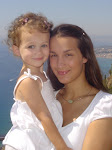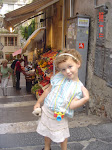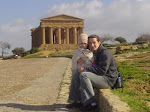I chose to focus my encounter project on Mr. Jim Davidson and his craft of making beautiful wooden bowls. Mr. Davidson lives in Dale, IN and is the grandfather of a close friend of mine, which is how I came to see the bowls and was given the opportunity to interview him. He is a man of many years, born in Eau Claire, WI in 1928 . His love of bowl making sparked about twenty six years ago when he bought his first lathe, spending little time doing spindle turning, weed pots, candle holders, ornaments and other small items. He then bought a better lathe which was sturdier and allowed him to do face plate work enabling him to make bowls. Along with the lathe he has high speed steel turning tools and for the most part relies on Bowl gouges and round and square nose scrapers but he has a wide assortment of specialty tools that are in the seldom used category as well as some of his own designs.
. His love of bowl making sparked about twenty six years ago when he bought his first lathe, spending little time doing spindle turning, weed pots, candle holders, ornaments and other small items. He then bought a better lathe which was sturdier and allowed him to do face plate work enabling him to make bowls. Along with the lathe he has high speed steel turning tools and for the most part relies on Bowl gouges and round and square nose scrapers but he has a wide assortment of specialty tools that are in the seldom used category as well as some of his own designs.
Mr. Davidson became even more interested in bowl making after a visit with an Amish gentleman in Ohio who had access to scrap oak granting him access to more elaborate bowl making. He bought a couple of books and experimented with the information they offered and went from there, learning through years of trial and error which taught him a great deal.
There are several steps involved in turning a bowl. First, he simply secures a piece of wood to the lathe using a chuck of some kind, turns the lathe on and starts to make shavings allowing the wood to provide a pattern that seems to fit it. Mr. Davidson mentions that he prefers to start with a sketch of the cross section of the piece he wants to make, he chooses the type of wood, and also chooses a pattern for accent strips or other independent designs that may be incorporated. He then determines the number of segments he wishes to use in the main body of the bowl, he generally uses twelve although he can go as high as thirty two and as low as six. He then calculates the segment lengths and width based on the cross section of the design, and then cuts the segments to the proper angle and length. He glues the segments into a ring that become one of the layers in the assembly. The rings are glued together, stacking and centering them one on top of another until the blank is totally assembled. From there it is to the lathe and he starts to make shavings to remove the excess wood and leaves the remainder to match the pattern, taking great care so as to maintain the same wall thickness throughout the piece. After sanding the piece with varying grits of abrasives the bowl is ready for finishing. He normally applies six coats of varnish and then buffs the piece out.
Mr. Davidson states he uses any wood that he finds appealing and is constantly searching for figured grain of a pleasing pattern. Most of what he works with is the native hard woods although he does purchase some imported material for color and grain. Most of the imported lumber is very expensive and our native hardwoods, for the most part, provide him with everything he needs.
Mr. Davidson has spent a considerable amount of time with his son-in-law, Steve, teaching him the craft of bowl making. Periodically a fellow turner will spend some time with him sharing information and once in a while someone will come along who wants to spend several days with him and he will welcome them. Mr. Davidson mentions it is fun for him to have someone he can share his enthusiasm with.
Most of his bowls are give to friends and family, but he does have some for sale at two different art galleries. His charge for the bowls does not generate many sales. The length of time required to make a bowl is dependent on the number of individual pieces that it contains. It could vary from a low of six hours for a 4x6 bowl to over sixty hours for a 6x8 lidded bowl. Hence the high price for the bowls and the low amount of sales.
Mr. Davidson has made a lot of bowls and perhaps has one hundred or more scattered around the home he shares with his wife. How many bowls total, he would not even hazard a guess. He does know that his annual production has been going downhill a great deal over the last few years, driven in part by more complex patterns as well as his age catching up with him.
This post is in response to the Material Culture (Artist/Craftsperson) encounter assignment
 . His love of bowl making sparked about twenty six years ago when he bought his first lathe, spending little time doing spindle turning, weed pots, candle holders, ornaments and other small items. He then bought a better lathe which was sturdier and allowed him to do face plate work enabling him to make bowls. Along with the lathe he has high speed steel turning tools and for the most part relies on Bowl gouges and round and square nose scrapers but he has a wide assortment of specialty tools that are in the seldom used category as well as some of his own designs.
. His love of bowl making sparked about twenty six years ago when he bought his first lathe, spending little time doing spindle turning, weed pots, candle holders, ornaments and other small items. He then bought a better lathe which was sturdier and allowed him to do face plate work enabling him to make bowls. Along with the lathe he has high speed steel turning tools and for the most part relies on Bowl gouges and round and square nose scrapers but he has a wide assortment of specialty tools that are in the seldom used category as well as some of his own designs.Mr. Davidson became even more interested in bowl making after a visit with an Amish gentleman in Ohio who had access to scrap oak granting him access to more elaborate bowl making. He bought a couple of books and experimented with the information they offered and went from there, learning through years of trial and error which taught him a great deal.
There are several steps involved in turning a bowl. First, he simply secures a piece of wood to the lathe using a chuck of some kind, turns the lathe on and starts to make shavings allowing the wood to provide a pattern that seems to fit it. Mr. Davidson mentions that he prefers to start with a sketch of the cross section of the piece he wants to make, he chooses the type of wood, and also chooses a pattern for accent strips or other independent designs that may be incorporated. He then determines the number of segments he wishes to use in the main body of the bowl, he generally uses twelve although he can go as high as thirty two and as low as six. He then calculates the segment lengths and width based on the cross section of the design, and then cuts the segments to the proper angle and length. He glues the segments into a ring that become one of the layers in the assembly. The rings are glued together, stacking and centering them one on top of another until the blank is totally assembled. From there it is to the lathe and he starts to make shavings to remove the excess wood and leaves the remainder to match the pattern, taking great care so as to maintain the same wall thickness throughout the piece. After sanding the piece with varying grits of abrasives the bowl is ready for finishing. He normally applies six coats of varnish and then buffs the piece out.
Mr. Davidson states he uses any wood that he finds appealing and is constantly searching for figured grain of a pleasing pattern. Most of what he works with is the native hard woods although he does purchase some imported material for color and grain. Most of the imported lumber is very expensive and our native hardwoods, for the most part, provide him with everything he needs.
Mr. Davidson has spent a considerable amount of time with his son-in-law, Steve, teaching him the craft of bowl making. Periodically a fellow turner will spend some time with him sharing information and once in a while someone will come along who wants to spend several days with him and he will welcome them. Mr. Davidson mentions it is fun for him to have someone he can share his enthusiasm with.
Most of his bowls are give to friends and family, but he does have some for sale at two different art galleries. His charge for the bowls does not generate many sales. The length of time required to make a bowl is dependent on the number of individual pieces that it contains. It could vary from a low of six hours for a 4x6 bowl to over sixty hours for a 6x8 lidded bowl. Hence the high price for the bowls and the low amount of sales.
Mr. Davidson has made a lot of bowls and perhaps has one hundred or more scattered around the home he shares with his wife. How many bowls total, he would not even hazard a guess. He does know that his annual production has been going downhill a great deal over the last few years, driven in part by more complex patterns as well as his age catching up with him.
This post is in response to the Material Culture (Artist/Craftsperson) encounter assignment











